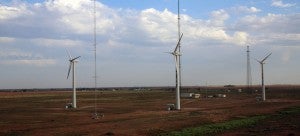House Cuts Clean Energy Funding, Dragging Down An Entire Community Of American Innovators
This commentary, authored by Robert Fares, originally appeared on Scientific American’s “Plugged In” blog.

In my last post, I discussed a House subcommittee’s shortsighted vote to slash funding for the U.S. Department of Energy’s (DOE’s) innovative Advanced Research Projects Agency – Energy (ARPA-E). I’m sorry to report that the rest of the House has now followed suit, passing a $30 billion energy spending bill that cuts a huge chunk out of clean energy programs.
Not only does the bill contain the subcommittee’s 81 percent cut to ARPA-E, it also guts energy efficiency programs and even rolls back progress in energy efficient lighting. The House’s embargo on funding for clean energy doesn’t just hurt our footing in the international race towards a new energy economy, it also drags down an entire community of American innovators working to achieve a sustainable future.
We deserve more than political posturing and moves as antiquated as the incandescent bulb. Right now, a convergence of environmental, economic and technological forces is transforming the global energy landscape. Just last month, the International Energy Agency (IEA) projected that renewable energy sources would eclipse nuclear and gas generation by 2016, and provide a quarter of the world’s energy supply by 2018. Renewable energy is unequivocally a major component of the energy landscape.
With the global rise of renewables, clean energy has become an inextricable component of energy science and engineering. Programs in sustainability, renewable energy, smart grid, and energy efficiency have emerged at major universities all over the United States. These programs popped up as fields like mechanical and electrical engineering identified climate change as a key challenge facing humanity. Engineers have always sought to apply scientific knowledge to overcome technical challenges and ensure human safety and progress. Now, more than ever, academic researchers are passionately seeking solutions to address global warming.

As top engineers and scientists have acknowledged the need to address the threat of climate change, so too have aspiring young scientists and engineers. Sustainability has become part of innovative educational programs across the country. Today, it is rare to see a science classroom without a miniature solar panel or wind turbine on its shelves. Why? Because students of all ages are compelled by the chance to design the next device or system that will help us overcome the challenges resulting from climate change. Students’ passion for clean energy helps them endure difficult subjects like math and science, making the U.S. more competitive internationally.
We owe it to these students to keep up the pace of clean energy education and research. Government funding agencies like ARPA-E and the DOE have a direct influence on science and engineering departments all over the country. Cutting these agencies has a ripple effect that hurts students, professors and other educators across the nation. Whether our elected leaders like it or not, researchers and academics will continue to explore the potential of the new energy frontier. The question is, will the government promote their efforts, or squander the momentum thousands of talented Americans have built up over many years of dedicated work?
Robert Fares is a Communications Intern at Environmental Defense Fund and a Ph.D. student in the Department of Mechanical Engineering at The University of Texas at Austin. Robert’s research at The University of Texas looks at how energy storage models can be used with large-scale data and optimization for economic operational management of battery energy storage. Through his research, Robert hopes to demonstrate the marketability and technical compatibility of emerging storage technologies.












2 Comments
It’s understandable that Congress would do away with energy project loan guarantees after Solyndra, Abound, et al. But ARPA-E? If there’s any single program at DOE that has proven its value it’s this one. Relatively small grants have led to exponential increases in private sector add-on funding for dozens of energy startups – which in my view is the role of government. ARPA-E swings for home runs with every grant it awards, so some will certainly miss. But the successes have been meaningful and long-lasting: http://lnkd.in/q8rxWX
Thank you Gene. The entire House of Representatives did pass the energy bill referred to in this post. You can read more about the bill here: http://thehill.com/blogs/floor-action/house/310337-house-passes-30b-energy-water-spending-bill.
Although the bill passed in the House, it is unlikely to pass in the Senate or be signed by the President it its current form.